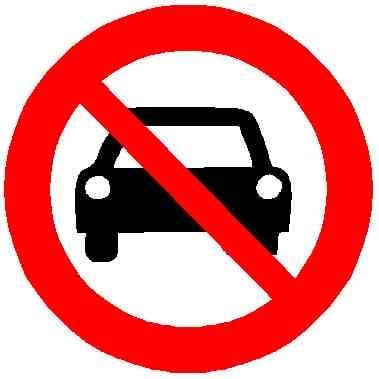If we can do multi-use Uber-routing and live route updates and live bus fleet management, we can have buses that stop where each passenger wants to be picked up and dropped :D
They have this service in Timaru, New Zealand which is a relatively low density town / city of less than 30,000 people. They use vans / minibusses and use the same software to dynamically plan the best route to pick up the passengers that book via the app (or by phone) and drop them to their destinations in the most efficient way possible. You may have to walk to the end of your street for pickup. If there are ever times when there aren’t any passengers the van isn’t trundling endlessly around in circles doing nothing but waste fuel. I assume it works best in situations / areas where there aren’t that many public transport users and on high volume routes they can retain traditional fixed lines alongside the on-demand solution with people using whichever service works best for them. Timaru ended the last fixed route service early this year and have gone full on-demand only.
First you have to define the problem you want to solve then attempt to present a solution. You appear to want to serve the ultimate in convenience and service to a passenger, to have the passenger to do less walking, less waiting, while still be “economically feasible”. For who? For everyone? If we all had limo service but not dedicated, we agreed we can all share limos, all passenger vehicles would be taxis and a significant part of the workforce were limo/taxi drivers, but we would have less cars on the road. Can we afford this as a society or is it going to be just for the few that can, and the rest would walk?
Minibuses and minivans end up being less efficient than anything else. In countries where cabs are allowed to pick up 2-3 different passengers if they find someone down the road going in the same general direction, end up with passengers avoiding to get on someone else’s cab due to the routing, time, and ending up with about the same cost. There are 7-9 passenger minivans, imagine all going to different places and imagine being in the back and having to get out. Even small buses on local satelite routes end up being very costly due to single door multiple stop routes. EVERYONE wants to be next to the door and not have to rub and push people to get out.
Trains, multicar trains with more than 45’ between stops, are extremely efficient. Small local trains and metro/subway is much more costly pass/distance than trains. Fewer cars, exponential energy cost, tremendous infrastructure. Large buses beat small trains overall, in urban environments. (Raising a train on ramps over the roads costs 2-3 times more than having them on street level. Putting them undergroun on an already built city costs 2x more than raising them up. Trains take an enormous amount of energy to accelerate to cruising speed, little energy to maintain it, and another huge amount of energy to stop them again (mostly heat realeased, little generator energy recovered). To have them accelerate and stop as frequently as bus stops they become as costly as passenger cars.)
Cycling for able bodied passengers in a priority to cycling transport system beats everything. Just a video clip of Holland urban centers is proof of concept.
So what is the problem you are attempting to solve?
Buses are efficient due to a fixed route. Having an empty bus (save, yourself) run around erratically will defeat this efficiency, essentially becoming a large limo.
Usually the bus would not circulate empty and conversely I’ve been on fixed bus routes where there were 3 passengers, so what you are saying is very debatable, the key here is flexibility. The flexibility of on-the-go bus route rerouting has huge potential for lower density areas like suburbs or off-peak hours or as a complementary service, but I’m willing to listen to counterarguments to this.
You can’t be “fuck cars” and simply tell people who don’t live in cities to get fucked, you need to present alternatives and this is a start, maybe with smaller buses or vans, depending on live demand estimates.
So, a criminal can sign up, get on an on-demand bus, rob people, and get off. I wonder what safety features they have in the UK because, in the US, criminals would love this service. Ride out to the suburbs, burgle a house, and steal a car to bring the loot back. Rinse and repeat.
You don’t sound like somebody who’s ever stepped inside a bus. What safety features are there in place to stop somebody walking/driving to burgle a house? You can get robbed anywhere, in a bus, in the street, anyway, what safety features do you have for that? This is such a shit take and I’m surprised it would be any honest person’s first reaction. I hope you’re a bot.
PS: you may want to get off the internet, criminals may use it to rob you.
And nobody should be driving cars, because criminals will use them to run you over or worse: rob you.
I’ve ridden many buses and trains. I’ve seen plenty of YouTube videos where people are attacked on buses. I’ve seen plenty of light rail trains where the homeless ride around the entire day.
Ride out to the suburbs, burgle a house, and steal a car to bring the loot back actually happened in Baltimore, Maryland, USA when they extended the red line light rail to Hunt Valley. The Hunt Valley Mall died and was torn down a few years later.



